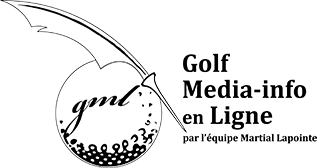In most of golf tournament, the limits of the penalty areas are defined by a red line. We all know now, in the new 2019 rules of golf, we may remove any loose impediment even if our ball lies in a penalty area. Why do we still need to know if the ball is in the penalty area?
Two reasons come to mind. Danger from an animal and relief from an obstruction.
DANGEROUS ANIMAL CONDITION
We may have a free relief when our ball lies in an area where there is a danger from an animal. If the ball lies in a penalty area, we must take relief without penalty, but we must stay within the penalty area. Often, we can’t find any  dry area. If the ball lies in the general area, we may drop a ball anywhere in the general area.
dry area. If the ball lies in the general area, we may drop a ball anywhere in the general area.
OBSTRUCTION
Without penalty we may have a relief from a Movable Obstruction anywhere on the course. If the ball lies in a penalty area, we won’t get a free relief from an Immovable Obstruction
IS THE BALL LYING IN A PENALTY AREA?
When we don’t have any lines on the ground, we must consider that the penalty area starts when the ground starts to slope toward the water, at least on most of the Florida golf courses. In Quebec, most of the penalty areas are defined by the change of grass near the lake, pound, river or ditch. We almost always have thick rough near the water.
BALL HITS AN OBJECT OUT OF BOUNDS AND ENTERS IN A PENALTY AREA
In the new 2019 rules, we don’t have any more the option of dropping a ball at two club-length from the opposite side of the penalty area. When the ball hits a roof and bounces back in the water, we have a problem. The only option is to go back where the previous shot was made.
But it is possible for the Committee to put in effect a local rule to use the opposite side.
NEXT WEEK: When is my ball lying Out of Bounds?






